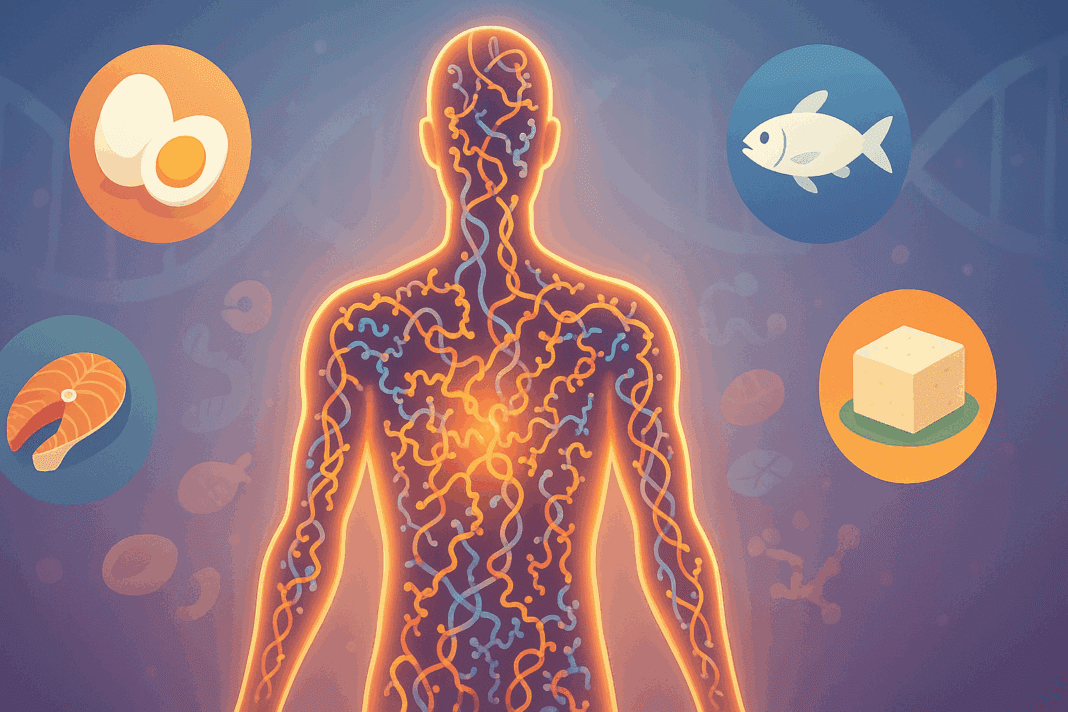Protein is a cornerstone of human nutrition, yet many people underestimate its significance until a deficiency manifests or health goals begin to falter. To fully appreciate protein’s essential role in supporting life and optimizing well-being, it’s necessary to understand not only what protein is, but also what it does for the body at a cellular, functional, and systemic level. While popular discourse often reduces protein to a gym-goer’s staple or a weight-loss tool, the truth is far more complex and profoundly important. From supporting the immune system to rebuilding cells, the importance of protein in growth and repair, energy regulation, and hormone synthesis reveals just how foundational this macronutrient is to daily health. In this article, we’ll uncover six evidence-based, expert-level facts about proteins that illustrate their indispensable place in a healthy diet. Whether you’re curious about high protein foods, wondering what part of the body proteins help, or questioning why is protein important for overall wellness, these insights will provide a scientifically grounded, accessible, and actionable overview.
You may also like: Macronutrients vs Micronutrients: What the Simple Definition of Macronutrients Reveals About Your Diet and Health
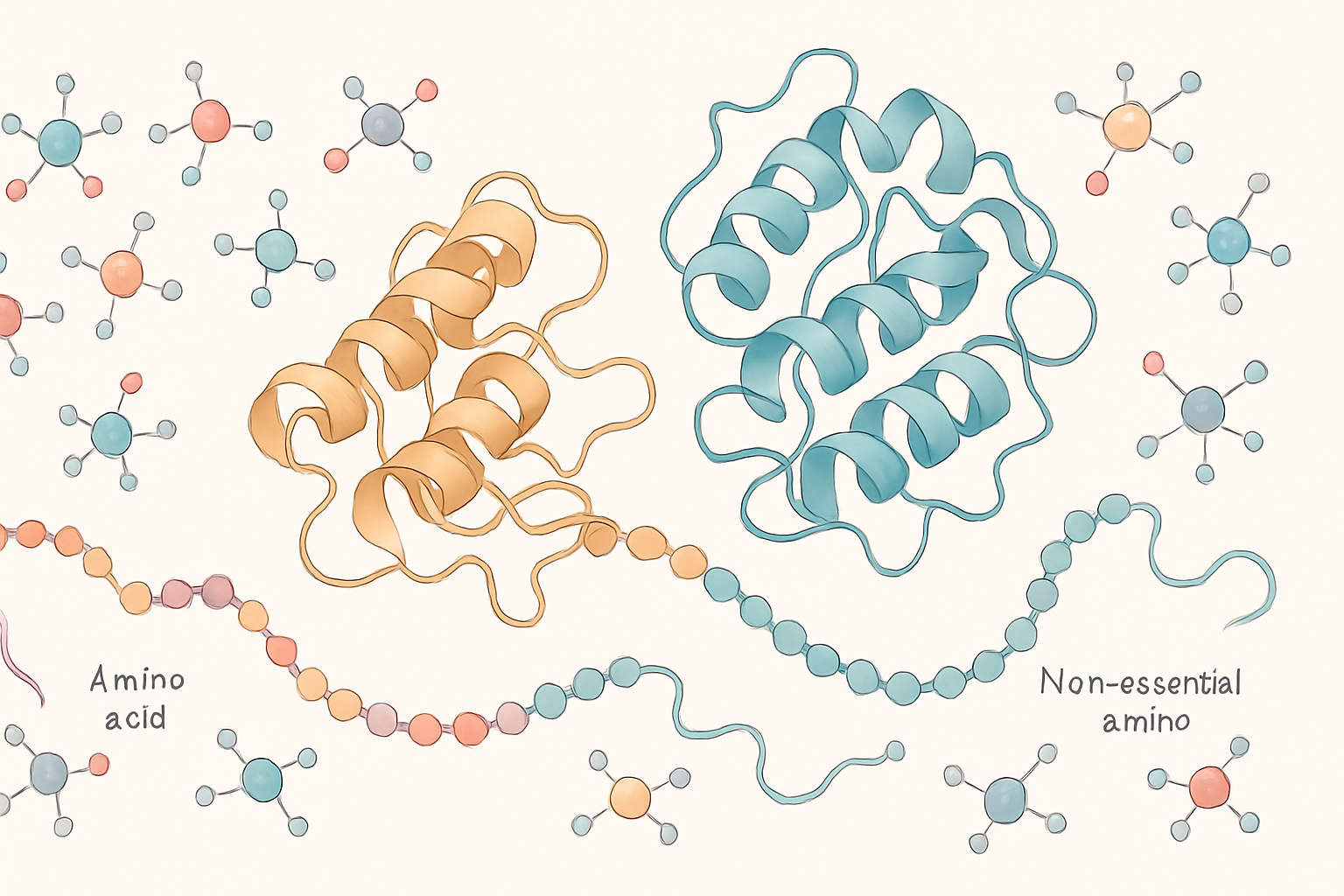
Understanding What Protein Is and Why It Matters
At its most fundamental level, protein is a macronutrient composed of amino acids, which are often referred to as the building blocks of life. These amino acids form complex chains that fold into specific three-dimensional shapes, allowing proteins to perform a wide range of functions in the human body. The protein definition in nutrition isn’t just academic; it’s central to understanding how food fuels health. Protein is one of the three major macronutrients, along with carbohydrates and fats, and provides four calories of energy per gram. However, its value transcends energy alone. What nutrient comes from protein is not just energy, but the structural and functional components necessary for tissue development, enzyme activity, hormone production, and more.
The body relies on twenty amino acids, nine of which are essential—meaning they must be obtained through diet because the body cannot synthesize them. This is why the best sources of protein are those that provide all essential amino acids in adequate amounts, such as meat, fish, dairy, eggs, quinoa, and soy. These complete protein foods contrast with incomplete proteins, which lack one or more essential amino acids, such as many plant-based sources. Yet when combined thoughtfully—such as beans with rice or peanut butter with whole-grain bread—these can form a complete profile. Understanding what protein is good for means acknowledging not only the nutrient’s biochemical complexity but also its practical importance in meal planning and dietary adequacy.

Protein’s Role in Cellular Repair and Growth
Among the most critical aspects of protein is its contribution to the growth and repair of tissues. This process is ongoing throughout life—from infancy and adolescence, when protein demands are highest due to rapid growth, to adulthood and aging, where protein helps preserve muscle mass and repair cellular wear and tear. The importance of protein in growth and repair is evident in how the body prioritizes protein use during recovery from illness, injury, or surgery. In such times, increased protein intake is often prescribed to promote faster healing and support immune function.
Protein’s ability to repair and make new cells extends to all tissues: muscle fibers, skin, organs, blood vessels, and even bones. This regenerative property is mediated by specific proteins like collagen, elastin, and keratin, which provide structural integrity to skin, connective tissues, and hair. Enzymes—specialized protein molecules—facilitate thousands of metabolic reactions, including those involved in DNA repair and cellular replication. For athletes, individuals recovering from injury, or anyone pursuing a strength-building regimen, the benefits of a protein-rich diet become quickly evident. What nutrients are used for protein in the body are the amino acids that, once absorbed, contribute directly to these restorative processes.
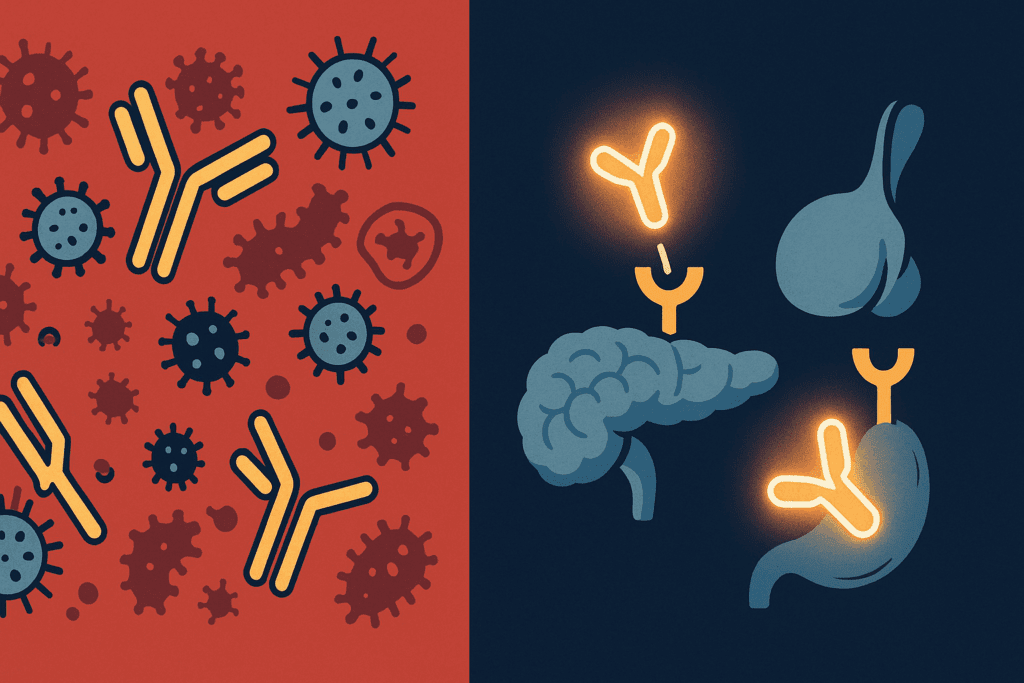
Immune Function and Hormonal Regulation
What benefits does protein do for your body beyond structural support? One of the most overlooked functions of protein lies in its role in the immune system. Antibodies—also known as immunoglobulins—are proteins that identify and neutralize pathogens such as bacteria, viruses, and toxins. Without sufficient protein intake, the body’s ability to mount a defense response is compromised. This is why protein malnutrition is often accompanied by higher susceptibility to infections and longer recovery times.
Additionally, proteins serve as precursors to numerous hormones and signaling molecules. Insulin, for instance, is a protein hormone crucial for glucose metabolism, while thyroid hormones, growth hormone, and leptin all rely on amino acid-based synthesis. Hormonal balance, particularly during developmental stages, stress, or metabolic conditions, depends heavily on adequate protein consumption. Identifying three functions of protein in food becomes easier when considering its dual structural and regulatory roles: supporting growth, enabling enzymatic action, and modulating hormonal activity. These protein advantages are far-reaching, extending into nearly every system in the human body.
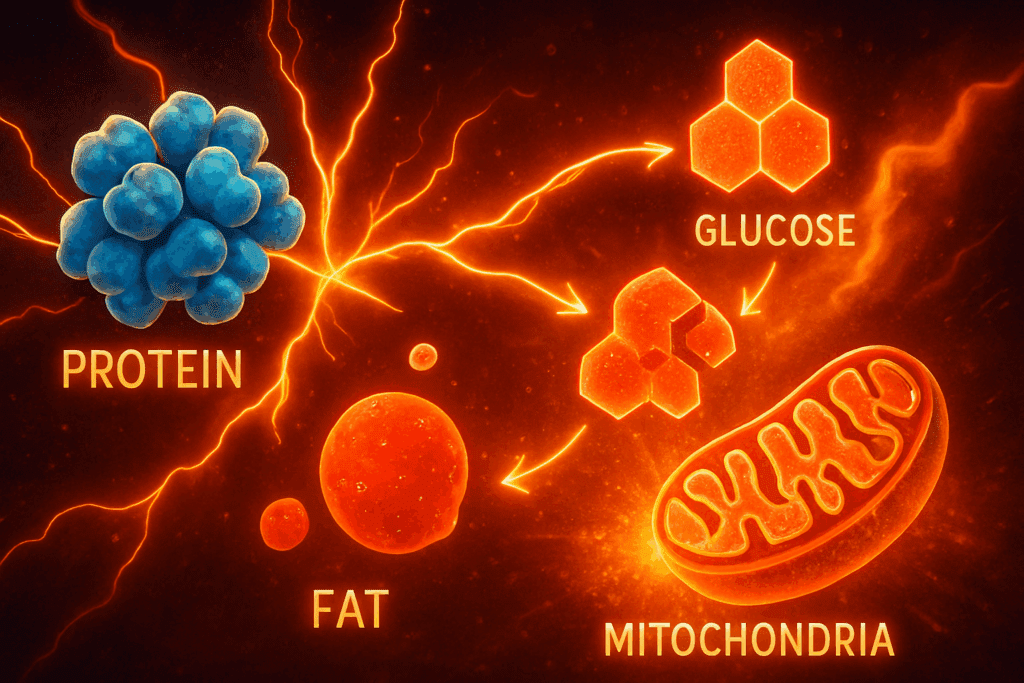
Protein’s Contribution to Energy and Metabolism
While carbohydrates are the body’s preferred energy source, protein can also be metabolized for energy, especially during periods of carbohydrate restriction or intense physical exertion. So, what are proteins in energy? When glycogen stores are depleted, the body turns to gluconeogenesis—a metabolic pathway where amino acids from protein are converted into glucose. Though not the body’s first choice for fuel, this adaptability is life-saving in conditions like starvation or extreme endurance activities. Protein’s involvement in energy metabolism doesn’t stop at conversion. It plays a regulatory role by influencing satiety hormones and thermogenesis, the process by which the body generates heat and burns calories.
The protein content of foods is a key consideration for individuals looking to manage weight, improve athletic performance, or regulate blood sugar. High protein foods help extend the feeling of fullness, reduce cravings, and stabilize post-meal glucose levels. For people managing diabetes or metabolic syndrome, diets higher in protein have shown promising benefits in both research and clinical settings. How does protein help the body? In this context, it supports metabolic health, assists in nutrient partitioning, and helps maintain lean body mass while reducing fat.
Tissue-Specific Benefits: What Part of the Body Does Proteins Help?
To truly understand what part of the body proteins help, one must appreciate how deeply integrated this nutrient is into every physiological structure. Muscles are perhaps the most cited beneficiaries of protein, and for good reason. Muscle tissue is predominantly composed of protein and relies on a steady supply of amino acids to maintain and grow in response to physical stress. However, the benefits extend well beyond skeletal muscle. Hair and nails are made primarily of keratin, a protein that requires adequate dietary intake to remain strong and vibrant.
Internal organs, including the liver, kidneys, heart, and lungs, depend on structural and functional proteins to perform essential tasks. The hemoglobin molecule in red blood cells—a protein complex—is responsible for transporting oxygen throughout the body. Without adequate protein, oxygen delivery is impaired, leading to fatigue and reduced physical capacity. Proteins also strengthen the epithelial linings of the gut and respiratory tract, fortifying the body’s first line of defense against pathogens. These facts about protein underscore its indispensable presence in all parts of the body, making the answer to “why do you need to have protein in your diet” both simple and scientifically robust.
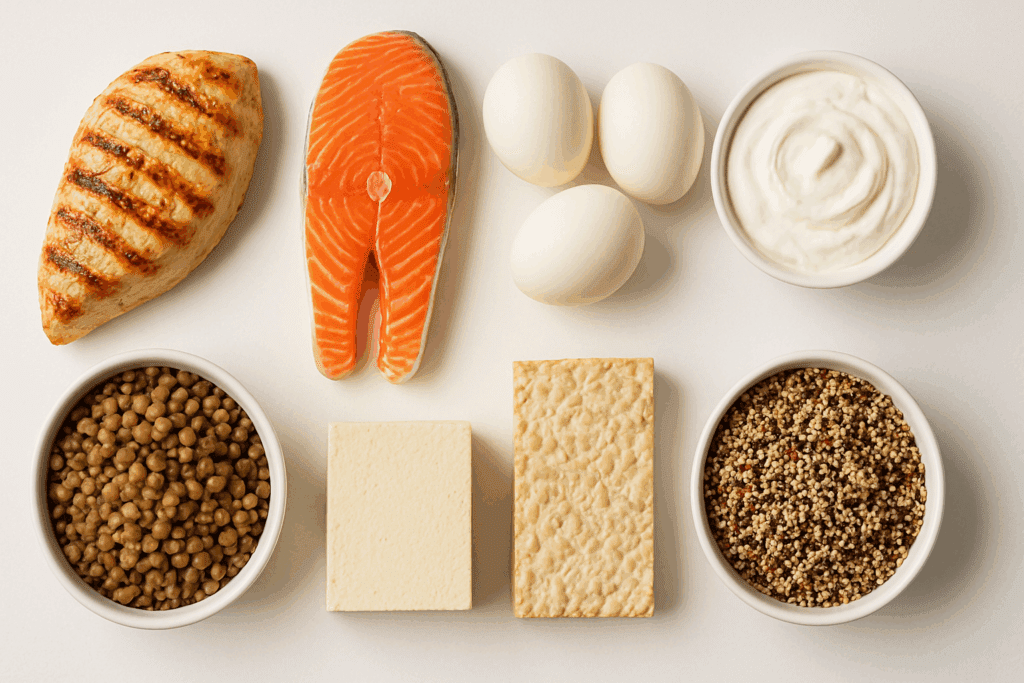
Dietary Sources and the Protein Content of Foods
With an appreciation for the biological necessity of protein, the next logical question becomes: how do we meet our needs through diet? Understanding the sources of protein is essential for building a balanced eating plan that supports both short- and long-term health. Animal-based protein foods such as chicken, beef, eggs, milk, and fish are among the best sources of protein due to their complete amino acid profiles. Plant-based protein foods like lentils, tofu, tempeh, quinoa, nuts, and legumes are excellent options as well, especially when consumed in varied combinations to ensure amino acid completeness.
The protein content of foods can vary widely. For instance, 3 ounces of cooked chicken breast offers about 26 grams of protein, while a cup of cooked lentils contains approximately 18 grams. Greek yogurt, cottage cheese, and eggs are high protein foods that also deliver vital nutrients like calcium, vitamin B12, and healthy fats. Vegetarians and vegans must be especially mindful of diversifying their protein intake to avoid deficiencies, as not all plant proteins contain all essential amino acids. This dietary strategy becomes even more critical for groups with elevated protein needs, such as pregnant women, elderly individuals, and athletes.
Interpreting Six Facts About Proteins for Everyday Health
Distilling everything into six facts about proteins may seem reductive, but it can also serve as a powerful framework for understanding how to apply nutritional science to real life. First, proteins are essential for cell structure and function. Second, they are critical for growth, healing, and repair. Third, they enable immune defense by forming antibodies. Fourth, they regulate metabolism through enzymes and hormones. Fifth, they provide satiety and assist in weight management. Sixth, they act as a secondary energy source in times of need. These six protein facts encapsulate the broad spectrum of protein’s influence across the body and mind.
Understanding how does protein relate to the food we eat is not just about counting grams or tracking macros. It’s about recognizing the biological synergy between nutrition and physiology. When we eat a meal rich in protein, we’re not just fueling muscles—we’re supporting immune cells, regulating mood, optimizing metabolic rate, and building the very tissues that sustain life. This contextual awareness enriches the conversation around food, making it not just about what we eat but how it serves the intricate systems of our bodies.
Beyond Nutrition Labels: Interpreting the Nutrient Values of Protein
When examining what are three nutrient values protein has, it’s important to move beyond simple labels and into a deeper nutritional literacy. First, protein provides amino acids, which are vital for anabolism and cell regeneration. Second, it offers caloric energy—4 calories per gram—that contributes to total energy needs. Third, protein enables a host of enzymatic and hormonal functions that are not always obvious but profoundly impactful. Identifying 3 functions of protein in food through this lens equips consumers with the knowledge to make informed dietary choices that align with their personal health goals.
Too often, protein is treated as a singular entity, when in fact it operates on many levels. The 12 benefits of protein range from tissue repair and muscle growth to immune fortification and appetite regulation. Learning how does protein repair and make new cells deepens this understanding, especially in clinical contexts such as post-operative recovery, cancer treatment, or physical rehabilitation. Appreciating the science behind these functions enhances public health messaging and empowers individuals to prioritize protein in a more nuanced way.
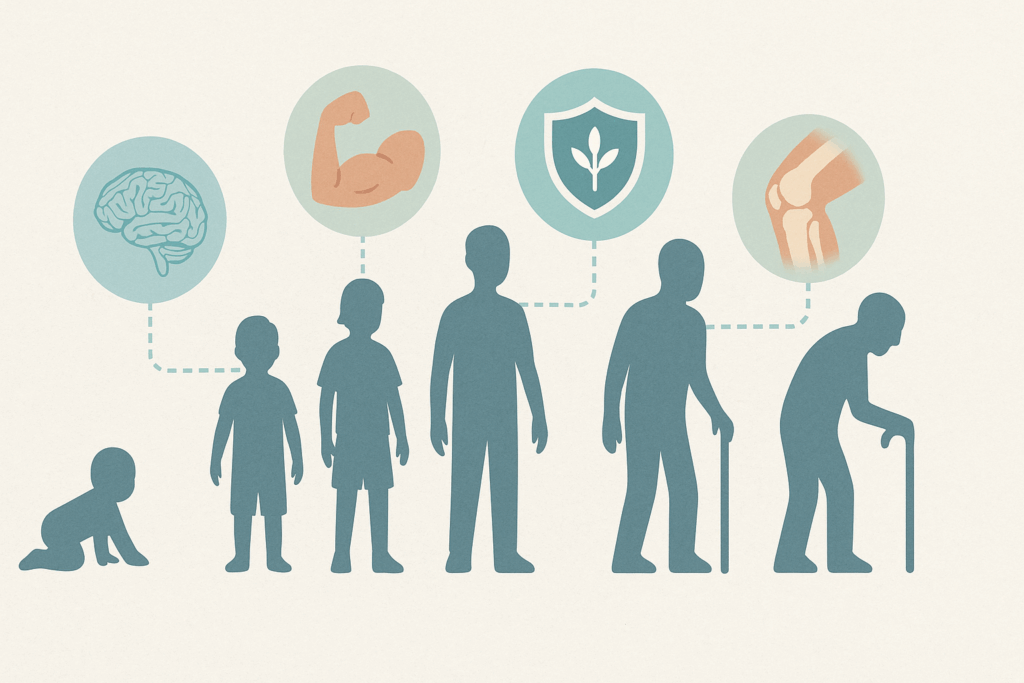
What Protein Is Good For at Every Life Stage
Protein needs shift across the human lifespan, making it vital to address why is protein important at different stages of life. During infancy and childhood, protein supports rapid growth and cognitive development. In adolescence, it fuels hormonal changes and muscular development. For adults, it maintains organ function, lean mass, and metabolic balance. In older adults, higher protein intake can help combat sarcopenia—the age-related loss of muscle mass—and preserve mobility and independence.
Protein-rich diets have also been linked to improved outcomes in managing chronic conditions such as type 2 diabetes, cardiovascular disease, and obesity. Understanding what is protein good for at each life stage promotes proactive, preventative nutrition strategies. This is where EEAT principles—Experience, Expertise, Authoritativeness, and Trustworthiness—intersect with public health by delivering evidence-backed, practical dietary guidance that can be tailored to individual needs.
Frequently Asked Questions (FAQ): Protein and Its Role in Health
1. How does protein affect mental health and brain function? While protein is often discussed in terms of muscle repair and physical health, its influence on mental health is equally significant. Amino acids derived from protein foods are precursors to neurotransmitters such as serotonin, dopamine, and norepinephrine, which regulate mood, sleep, and cognition. The importance of protein in growth and repair extends to brain cells, where it helps in synaptic signaling and neuroplasticity. High protein foods that contain tryptophan, like turkey or eggs, can indirectly support mental well-being by promoting serotonin synthesis. This highlights another layer of what protein is good for, reminding us that cognitive health depends on sufficient protein intake just as much as muscular or metabolic health.
2. Can protein consumption influence skin health and aging? Yes, protein plays a vital role in skin regeneration and elasticity. Collagen and elastin, two of the primary proteins in the skin, are responsible for maintaining its structure and flexibility. What nutrients are used for protein in the body include amino acids that contribute to the synthesis of these skin-supportive proteins. A diet low in protein can lead to slower wound healing, dull complexion, and premature signs of aging. Understanding what does protein do for your body must include its protective function for the skin, especially in preventing environmental damage and maintaining hydration through a healthy skin barrier.
3. What are some overlooked plant-based sources of protein that offer complete amino acid profiles? While animal products are commonly regarded as the best sources of protein, certain plant-based protein foods offer complete amino acid profiles as well. Quinoa, buckwheat, soy, chia seeds, and hemp seeds are excellent sources of protein that are often overlooked in Western diets. Incorporating a variety of these foods ensures that even plant-based eaters benefit from what nutrient comes from protein across all essential amino acids. These high protein foods are also rich in fiber, antioxidants, and healthy fats, providing additional health benefits beyond protein alone. Learning how does protein relate to the food we eat from diverse cultures helps broaden dietary choices while meeting nutritional needs.
4. How does protein intake impact metabolic rate and weight management in midlife? In midlife, metabolic rate naturally declines, making it more difficult to maintain a healthy weight. Protein-rich meals stimulate thermogenesis, meaning the body burns more calories to digest and metabolize protein than it does for carbohydrates or fat. One of the major protein advantages is its role in preserving lean muscle mass, which is directly tied to metabolic efficiency. Including high protein foods throughout the day also helps manage appetite and reduce the risk of overeating. In this context, what are 3 things protein does for the body? It supports muscle mass, enhances calorie burning, and regulates hunger—all essential for weight management, particularly as people age.
5. What part of the body does proteins help the most during physical recovery from injury or surgery? While protein benefits the entire body, its role in muscle and connective tissue repair is most prominent during recovery from injuries or surgery. Proteins like fibrinogen and collagen are essential for wound healing, clot formation, and tissue regeneration. This is where the importance of protein in growth and repair becomes highly visible, especially in medical settings. What protein is good for during such recovery phases goes beyond just rebuilding tissue; it also includes strengthening the immune response to prevent infection. Understanding how does protein repair and make new cells can inform recovery plans that are nutritionally optimized.
6. How can busy professionals integrate more protein into their diets without relying on meat or protein shakes? Integrating more protein foods into a fast-paced lifestyle doesn’t require extreme measures. Options such as hard-boiled eggs, Greek yogurt, edamame, roasted chickpeas, or almond butter on whole-grain toast are portable, nutrient-dense, and rich in the protein content of foods. By rotating these sources of protein throughout the week, individuals can meet their needs while keeping meals varied and satisfying. What are three nutrient values protein has? Beyond building blocks for tissues, these protein-rich snacks often contain calcium, iron, and essential fatty acids. Such options also highlight the practicality of choosing best sources of protein that are convenient yet nutritionally robust.
7. Are there any emerging technologies or innovations that improve the quality or sustainability of protein foods? Yes, recent innovations in food technology are transforming how we think about sources of protein. Lab-grown meats, mycoproteins derived from fungi, and protein extracted from algae or insects are gaining popularity for their low environmental footprint. These innovations answer the growing demand for sustainable, high protein foods without relying heavily on traditional livestock production. Additionally, advances in precision fermentation are helping create more bioavailable plant-based proteins. These facts about protein innovations reflect a shift toward future-forward nutrition where sustainability and health align.
8. What benefits does protein do for your body during pregnancy? During pregnancy, the demand for protein increases significantly to support fetal development, placental growth, and maternal tissue expansion. Protein helps build the baby’s organs, skin, and muscles while also ensuring the mother maintains adequate hemoglobin and immune function. Six facts about proteins in prenatal care include their role in hormone production, enzyme activity, DNA synthesis, and amniotic fluid regulation. Protein-rich diets during pregnancy also reduce the risk of low birth weight and developmental delays. This underscores why do you need to have protein in your diet especially during critical life stages such as pregnancy.
9. How can people track the right amount of protein for their individual needs? The protein definition in nutrition goes beyond one-size-fits-all recommendations. Factors such as age, sex, activity level, medical conditions, and fitness goals determine how much protein is needed daily. Tools like dietary tracking apps or consultations with a registered dietitian can help personalize intake based on body weight and health status. For example, an endurance athlete might require 1.2 to 2.0 grams of protein per kilogram of body weight, whereas a sedentary adult may need far less. Identifying 3 functions of protein in food that apply to you personally—like muscle repair, immune function, and energy balance—can also guide more precise dietary planning.
10. What are some common misconceptions about protein that can hinder healthy eating? A major misconception is that more protein is always better, leading some to overconsume protein foods while neglecting other essential nutrients. Another misunderstanding is that plant-based proteins are inherently inferior, which overlooks their diverse health benefits and complementary amino acid profiles. Some also assume protein is only important for bodybuilders or athletes, ignoring what benefits does protein do for your body in everyday scenarios like immune defense or maintaining healthy skin. Clarifying what are proteins in energy and how they can support stable blood sugar levels helps break down these myths. Emphasizing the 6 protein facts that highlight both physical and internal benefits encourages a more balanced and inclusive approach to protein consumption.
A Final Word on Protein’s Role in Health and Prevention
Reflecting on the core question—why is protein important for your health—it becomes clear that protein is far more than a diet trend or fitness obsession. It is an essential nutrient that performs thousands of roles in the body, from the visible (muscle growth, wound healing) to the invisible (hormone regulation, immune response). The six facts about proteins explored in this article serve as pillars of nutritional understanding, reminding us that every bite of protein-rich food supports the intricate choreography of life inside us.
Choosing the best sources of protein, understanding the protein content of foods, and appreciating how protein helps the body thrive are not just academic exercises—they’re practical steps toward longevity, energy, and disease prevention. Whether you’re crafting a vegetarian meal plan, recovering from illness, or simply trying to feel your best, protein deserves a central place on your plate. Embracing the full spectrum of what protein is good for transforms our relationship with food from one of habit to one of intention and nourishment. And in that transformation lies the true power of nutrition.
Further Reading:
6 Essential Nutrients and Why Your Body Needs Them


